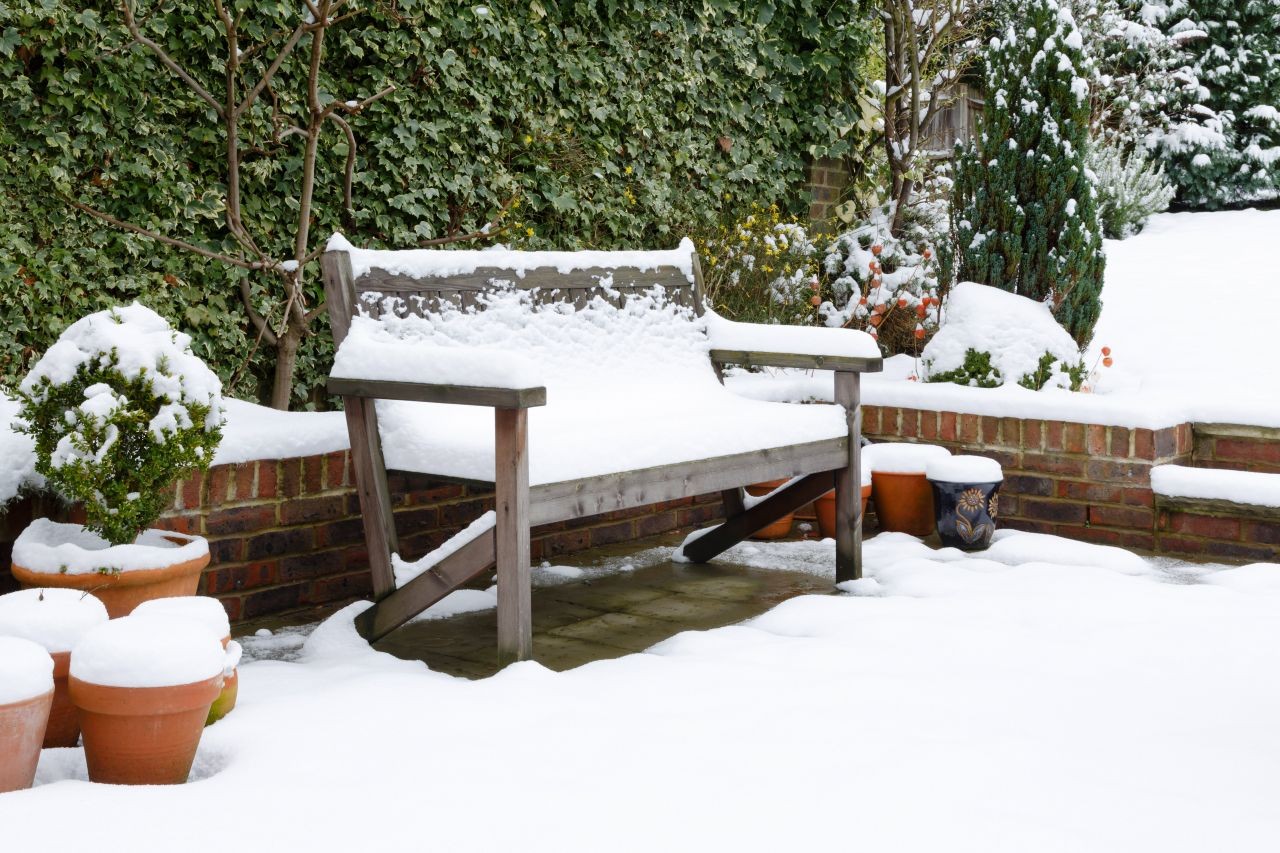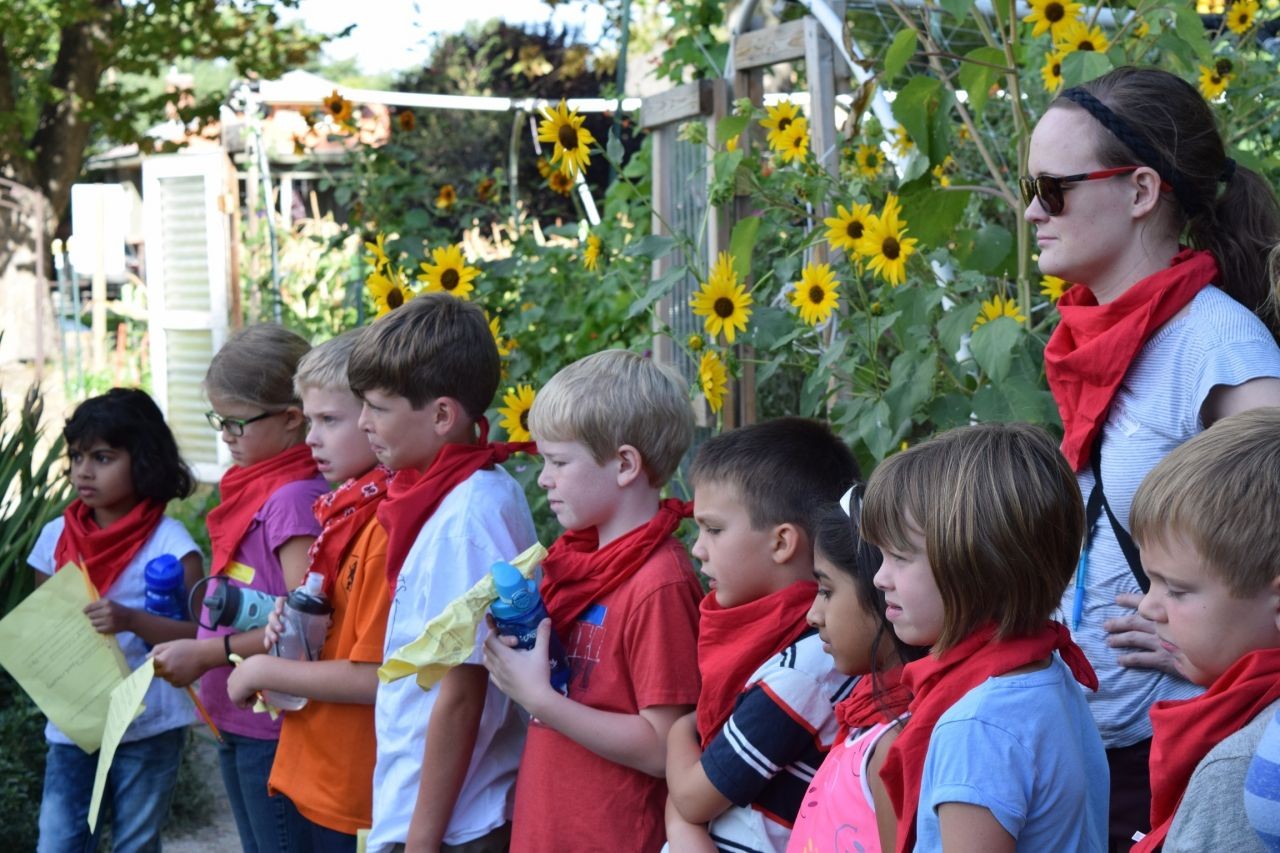Putting your garden to bed for the winter is a great way to ensure your soil will not have diseases or insects from the winter spells next season. Here are a few easy tips and tricks to winterize your garden.
Cleanup:
Remove past season’s rotting or unripened goodies, and stock up your compost pile with them. Completely remove all vines, roots, bulbs, etc. The reason is that insects and pests will feed on these plants during the season and can lay eggs causing hatchlings in your garden once the freeze is thawed.
This step also includes cleaning out the beds from any weeds or unwanted plants. Do NOT add these to the composting pile. (Photo Credit: Linden Land Group)
Give your beds some love:
Add your remaining compost from...
Wasatch Community Gardens Blog
Photo Gallery of Wasatch Community Gardens' Youth School Field Trip Program...
Wasatch Community Gardens' Growing Greens Field Trip program has been in full swing this fall. These field trips are a great way for youth to experience a connection between the environment, community, and the food system as they take part in learning gardening skills and eating fresh produce that nourishes their bodies.
Ashley Patterson, WCG's Executive Director, welcoming the students.
Students are encouraged to explore and examine plant, insect, and animal life in the garden.
And taste fresh herbs...
And even taste leafy greens... (don't worry, it doesn't bite back!)
Youth become best friends with kale.
Because they get to play in our safe-drinking aquifer.
Through our Growing Greens Field Trip Program, youth learn plant science, nutrition, and gardening by touring the garden grounds, tasting fresh produce, and participating in plant-based...
 This year’s mini-grants provided $10,712 in infrastructural improvements to seven community gardens throughout Salt Lake County. Three of these were gardens overseen by Wasatch Community Gardens (WCG), while four were gardens supported by WCG solely through our leadership resource Network. The focus of this year’s grant was again essential site improvements. Four gardens built tool sheds, one garden installed irrigation, one garden purchased an ADA-accessible picnic table, and one garden completed a variety of projects, including trimming of large fruit trees, purchase of basic tools, and irrigation timers. Below is a summary of project impacts, as described in mini-grant final reports, and a few photos:
4TH East Garden, 553 S 400 E, Salt Lake City
“We were able to trim two apple trees on the north side of the garden that were unsafe to walk under, and shaded two garden plots. We were also able to upgrade our garden’s equipment....
This year’s mini-grants provided $10,712 in infrastructural improvements to seven community gardens throughout Salt Lake County. Three of these were gardens overseen by Wasatch Community Gardens (WCG), while four were gardens supported by WCG solely through our leadership resource Network. The focus of this year’s grant was again essential site improvements. Four gardens built tool sheds, one garden installed irrigation, one garden purchased an ADA-accessible picnic table, and one garden completed a variety of projects, including trimming of large fruit trees, purchase of basic tools, and irrigation timers. Below is a summary of project impacts, as described in mini-grant final reports, and a few photos:
4TH East Garden, 553 S 400 E, Salt Lake City
“We were able to trim two apple trees on the north side of the garden that were unsafe to walk under, and shaded two garden plots. We were also able to upgrade our garden’s equipment....  Now that the Autumn Equinox has “fall”en into our laps, pumpkins are sprouting up at the farmers markets, grocery stores, and decorating the patios around us. There are so many fantastic opportunities to use pumpkins, uncarved to a carved jack-o-lantern, guts and all.
Here are a couple of ideas for its multipurpose functions for these beautiful squashes.
To Start: How to roast pumpkins
Use this recipe on a how to guide of roasting thy pumpkin for the remaining ideas:
1. Wash the dirt off the pumpkin.
2. Say goodbye to the stem, with a knife. Use that same knife to slice the pumpkin in half.
3. Scoop out the seeds and the guts. I know this is still fun as an adult, but I know your little kiddos would love to help and feel the slimy guts run through their fingers!
4. Fill a baking sheet with enough water to keep...
Now that the Autumn Equinox has “fall”en into our laps, pumpkins are sprouting up at the farmers markets, grocery stores, and decorating the patios around us. There are so many fantastic opportunities to use pumpkins, uncarved to a carved jack-o-lantern, guts and all.
Here are a couple of ideas for its multipurpose functions for these beautiful squashes.
To Start: How to roast pumpkins
Use this recipe on a how to guide of roasting thy pumpkin for the remaining ideas:
1. Wash the dirt off the pumpkin.
2. Say goodbye to the stem, with a knife. Use that same knife to slice the pumpkin in half.
3. Scoop out the seeds and the guts. I know this is still fun as an adult, but I know your little kiddos would love to help and feel the slimy guts run through their fingers!
4. Fill a baking sheet with enough water to keep...  With the upcoming workshop being held by Wasatch Community Gardens on October 3rd about how to start a community garden (Register Here!), some folks may be wondering the fundamental basics in answering this question. Provided is an overview of the steps and processes of starting out and the essentials to have a successful thriving community garden.
What is a community garden and how does it work?
A community garden is a piece of land shared by friends and neighbors for growing vegetables and flowers, and providing opportunities for positive social interactions and recreation. To have a successful community garden is to create a system for decision-making and responsibility-sharing that works for you and your garden. A governance system that involves all members of the garden and interested community members in maintaining and organizing garden operations will support long-term success.
Step 1: Forming a Planning Committee
Set up a team with...
With the upcoming workshop being held by Wasatch Community Gardens on October 3rd about how to start a community garden (Register Here!), some folks may be wondering the fundamental basics in answering this question. Provided is an overview of the steps and processes of starting out and the essentials to have a successful thriving community garden.
What is a community garden and how does it work?
A community garden is a piece of land shared by friends and neighbors for growing vegetables and flowers, and providing opportunities for positive social interactions and recreation. To have a successful community garden is to create a system for decision-making and responsibility-sharing that works for you and your garden. A governance system that involves all members of the garden and interested community members in maintaining and organizing garden operations will support long-term success.
Step 1: Forming a Planning Committee
Set up a team with...  The other day, I was at the grocery store purchasing strawberries. I had two choices:
Choice A - I could pay $1.98 for a pint of strawberries that were grown south of the border. Choice B - I could pay $4.98 for a pint of strawberries that were grown organically in California.
What I didn't see and what I was looking for was Choice C - I wanted a pint of strawberries that were grown organically, locally here in Utah. (Sometimes I have dreams of grandeur of jumping in my car, driving to the farm, and meeting the farmer who so lovingly grew them.)
I left the store frustrated without any strawberries. The silver lining? I knew I could buy my pint of organic, locally-grown strawberries at the farmers market on Saturday, which I did for $3.00.
Healthy - check,
Organic - check,
Local-check.
Success! (Plus I shook...
The other day, I was at the grocery store purchasing strawberries. I had two choices:
Choice A - I could pay $1.98 for a pint of strawberries that were grown south of the border. Choice B - I could pay $4.98 for a pint of strawberries that were grown organically in California.
What I didn't see and what I was looking for was Choice C - I wanted a pint of strawberries that were grown organically, locally here in Utah. (Sometimes I have dreams of grandeur of jumping in my car, driving to the farm, and meeting the farmer who so lovingly grew them.)
I left the store frustrated without any strawberries. The silver lining? I knew I could buy my pint of organic, locally-grown strawberries at the farmers market on Saturday, which I did for $3.00.
Healthy - check,
Organic - check,
Local-check.
Success! (Plus I shook...  If you read this blog, you will probably be familiar with eating locally. Maybe you participated in the Eat Local Challenge in years prior. Perhaps you have a garden. Your Saturday ritual might include a bike ride to Pioneer Park for: the cottage bacon; lemon spinach; burrito; spreads; people-watching. My point is, you already know how to do Eat Local Week.
In my experience, it's also something - eating locally - that one doesn't do just for the hell of it. People have reasons, values, beliefs… These things impel us to grow a garden, or get a CSA share. Here are some of those reasons: health, environmental impact, carbon footprint, response to personal trauma, supporting local communities, fun, friendship, nostalgia, exercise, peer pressure, taste.
This blog post isn't out to convince you that you should be eating more local food, or that you should take the Eat Local Challenge (even though...
If you read this blog, you will probably be familiar with eating locally. Maybe you participated in the Eat Local Challenge in years prior. Perhaps you have a garden. Your Saturday ritual might include a bike ride to Pioneer Park for: the cottage bacon; lemon spinach; burrito; spreads; people-watching. My point is, you already know how to do Eat Local Week.
In my experience, it's also something - eating locally - that one doesn't do just for the hell of it. People have reasons, values, beliefs… These things impel us to grow a garden, or get a CSA share. Here are some of those reasons: health, environmental impact, carbon footprint, response to personal trauma, supporting local communities, fun, friendship, nostalgia, exercise, peer pressure, taste.
This blog post isn't out to convince you that you should be eating more local food, or that you should take the Eat Local Challenge (even though...  As the Development Director for Wasatch Community Gardens (WCG), I spend a lot of time writing grant proposals for foundations, singing the praises of WCG’s garden-based youth classes, field trips, and summer camps and the amazing youth educators who run them.
(Photo by WCG Staff)
While I have always passionately believed in WCG’s programs and staff and the work we do, it wasn’t until my own child participated in a WCG City Sprouts summer camp for a week in August that I fully comprehended the magic of this “kids, gardens, and healthy eating” connection. I also gained a deeper appreciation for WCG’s talented and hard-working youth educators. As a parent, of course I want my kids to spend time outside in the garden and eat healthy foods. But have you ever tried to get a 3-year-old to do something that he doesn’t want to do?
(Photo: “Trying to get my 3-year-old...
As the Development Director for Wasatch Community Gardens (WCG), I spend a lot of time writing grant proposals for foundations, singing the praises of WCG’s garden-based youth classes, field trips, and summer camps and the amazing youth educators who run them.
(Photo by WCG Staff)
While I have always passionately believed in WCG’s programs and staff and the work we do, it wasn’t until my own child participated in a WCG City Sprouts summer camp for a week in August that I fully comprehended the magic of this “kids, gardens, and healthy eating” connection. I also gained a deeper appreciation for WCG’s talented and hard-working youth educators. As a parent, of course I want my kids to spend time outside in the garden and eat healthy foods. But have you ever tried to get a 3-year-old to do something that he doesn’t want to do?
(Photo: “Trying to get my 3-year-old...  A vegetable garden can be prime real estate in an urban setting, given the small size of many yards and lack of areas with full sunlight. What's the aspiring urban gardener to do to grow more food within a limited square footage?
Grow up!
Seriously. Many vegetable crops are capable climbers, as long as you can provide them something sturdy to climb on.
Peas
Tomatoes
Squash
Cucumbers
Melons
Pole Beans
Get those sprawling vine vegetables off the ground. Not only will they increase their yields by reaching more sunlight, but the efficient space utilization will allow you to grow more plants per square foot.
At our "Vegetable Mining Operation" Community Garden in West Valley City, Kay Robison and her gardener buddies have engineered a cityscape of garden skyscrapers, some standing over 8 feet tall, and bursting with ripe vegetables. Their trellises were built with many cheap and readily available...
A vegetable garden can be prime real estate in an urban setting, given the small size of many yards and lack of areas with full sunlight. What's the aspiring urban gardener to do to grow more food within a limited square footage?
Grow up!
Seriously. Many vegetable crops are capable climbers, as long as you can provide them something sturdy to climb on.
Peas
Tomatoes
Squash
Cucumbers
Melons
Pole Beans
Get those sprawling vine vegetables off the ground. Not only will they increase their yields by reaching more sunlight, but the efficient space utilization will allow you to grow more plants per square foot.
At our "Vegetable Mining Operation" Community Garden in West Valley City, Kay Robison and her gardener buddies have engineered a cityscape of garden skyscrapers, some standing over 8 feet tall, and bursting with ripe vegetables. Their trellises were built with many cheap and readily available...  Whenever I think about fall and spring planting, the horrors of teeny tiny carrot seeds is the first thing to come to mind. The images of trying to make sure the small little seeds get lined up properly, getting the right number of seeds per inch, and of awkwardly hunching over the garden bed flash before my eyes like a bad dream.
Well, this year, I got an amazing tip from the School Garden Steward at Nibley Park Elementary. Aimee suggested mixing up a quick glue made of cornstarch and water, dabbing the glue along a napkin and sprinkling the seeds on the glue dabs. The little carrot seeds are all lined up and spaced out properly, and all you have to do is plant the seed strip!
It sounded too good to be true, but I gave it a shot anyway. I didn’t have cornstarch at the office, so I...
Whenever I think about fall and spring planting, the horrors of teeny tiny carrot seeds is the first thing to come to mind. The images of trying to make sure the small little seeds get lined up properly, getting the right number of seeds per inch, and of awkwardly hunching over the garden bed flash before my eyes like a bad dream.
Well, this year, I got an amazing tip from the School Garden Steward at Nibley Park Elementary. Aimee suggested mixing up a quick glue made of cornstarch and water, dabbing the glue along a napkin and sprinkling the seeds on the glue dabs. The little carrot seeds are all lined up and spaced out properly, and all you have to do is plant the seed strip!
It sounded too good to be true, but I gave it a shot anyway. I didn’t have cornstarch at the office, so I... 

